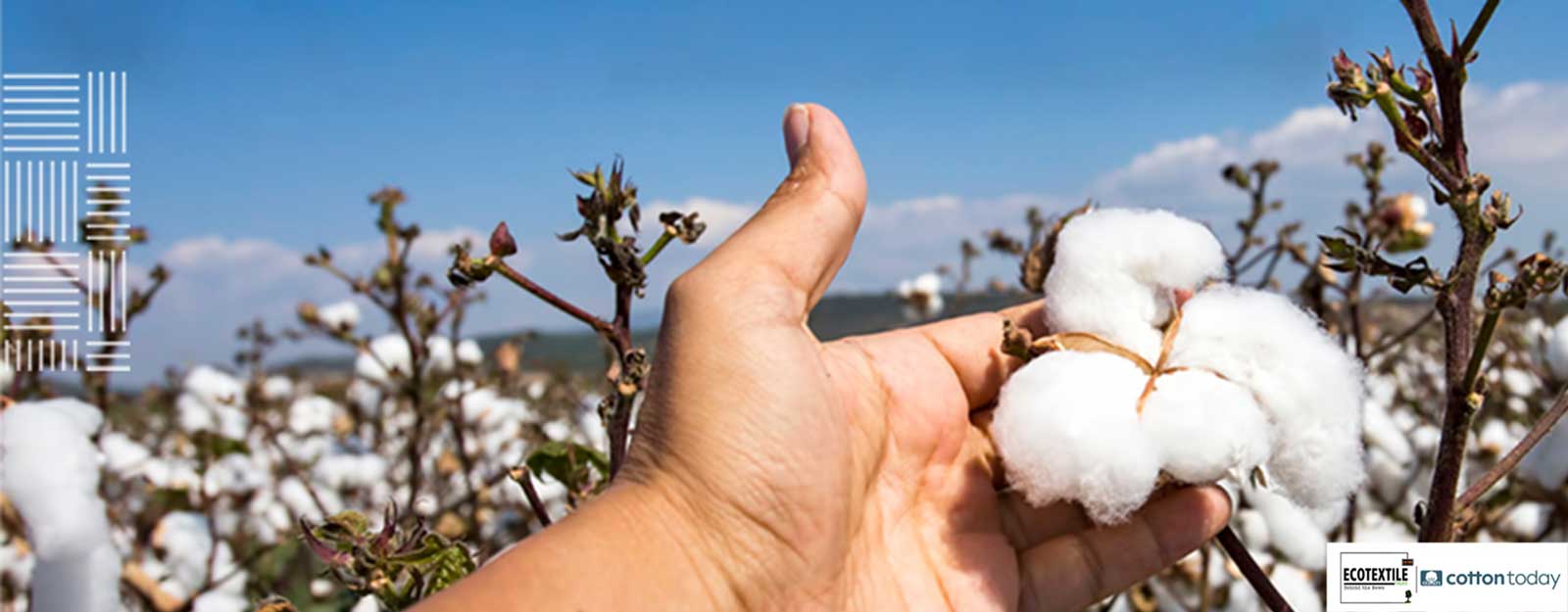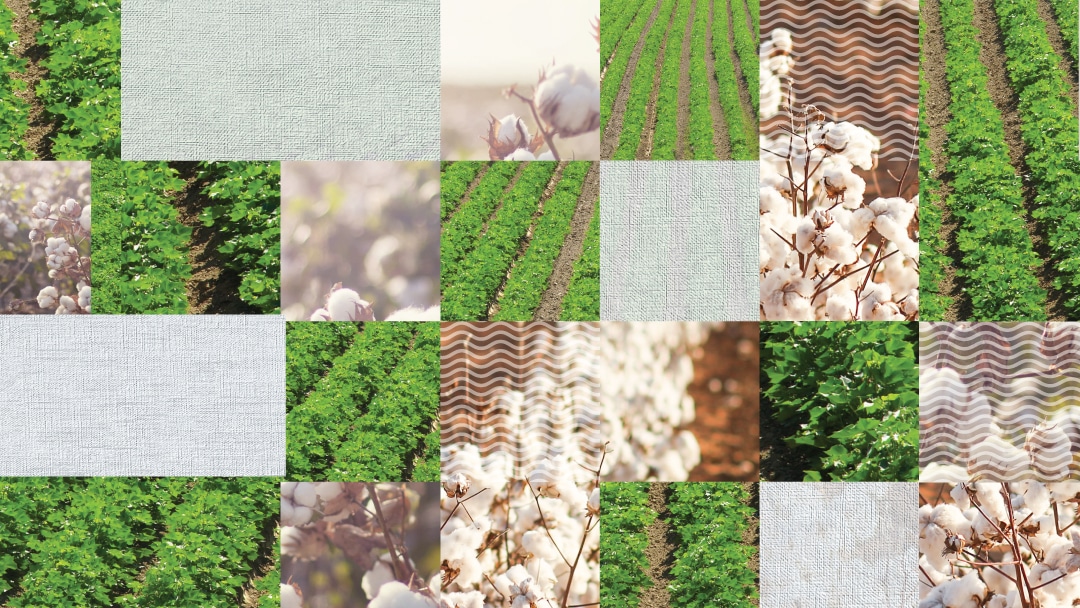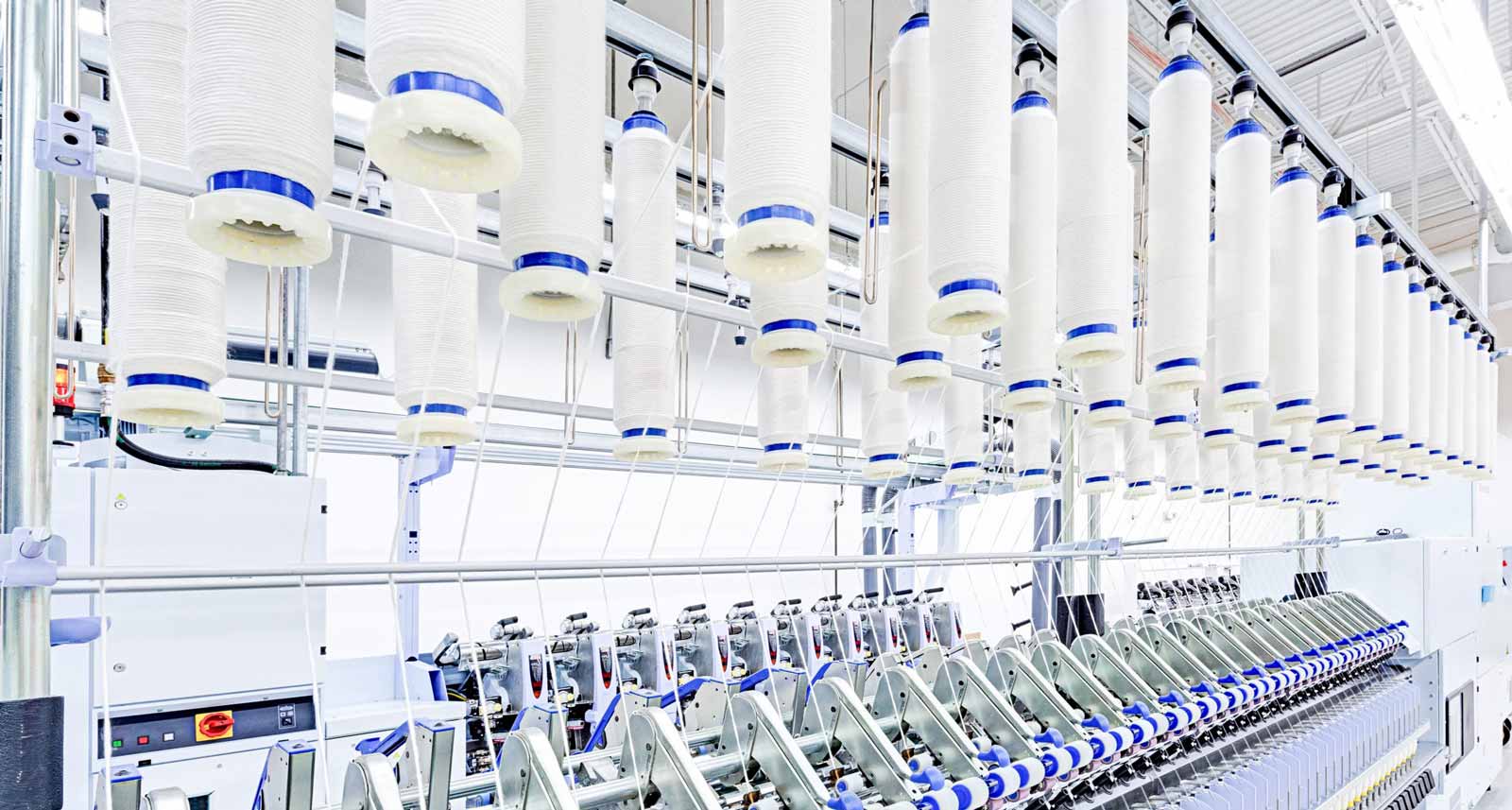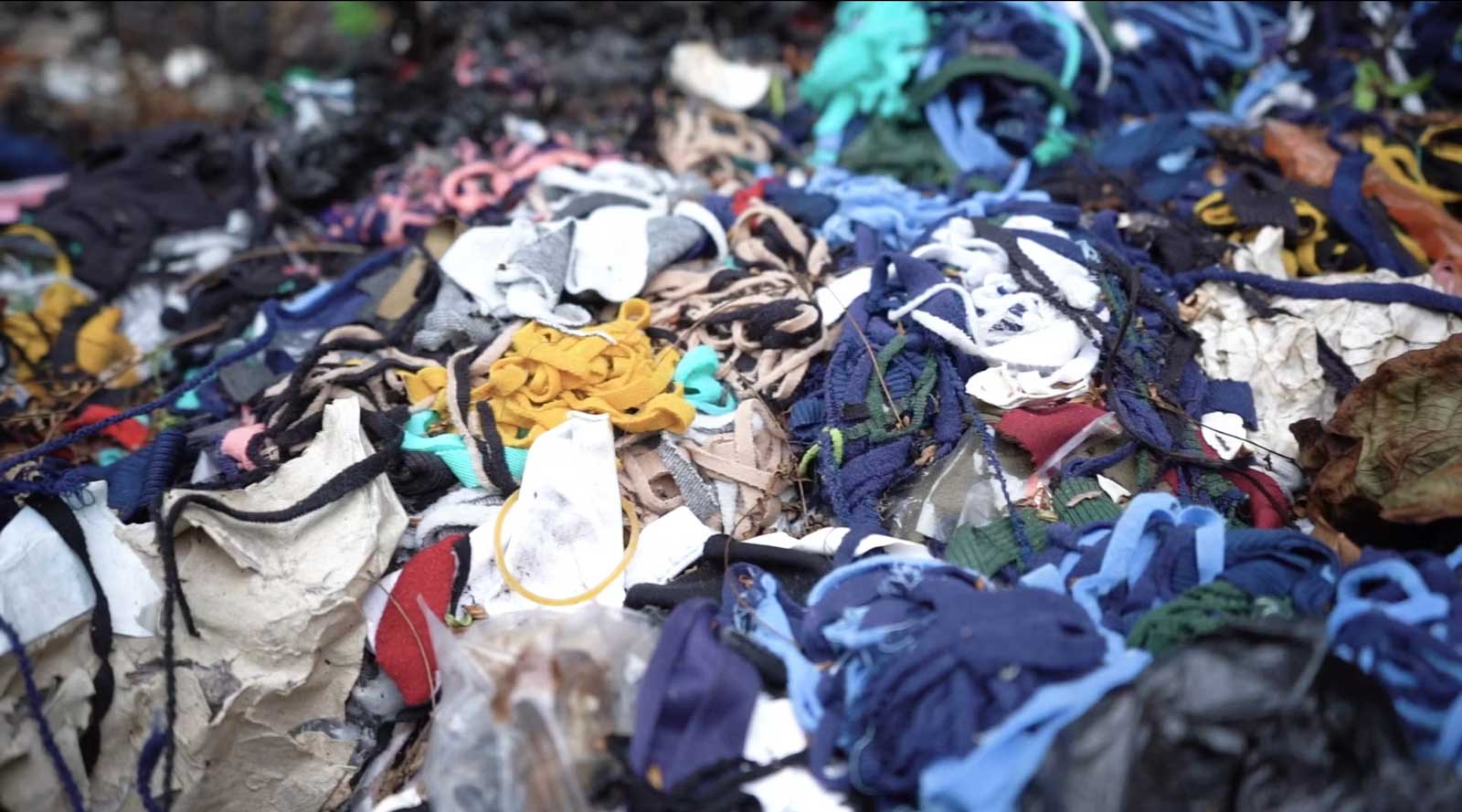I recently joined EcoTextile News for a series of three podcasts that take a closer look at sustainable practices in the cultivation of cotton. It was a great opportunity to connect with colleagues in the cotton industry – who are leading experts in their fields – and discuss collaborations and the progress we are making in cotton’s sustainability journey. Following are some highlights from our conversations and I hope you will take time to listen to all three podcasts.
Threaded Together (episode 1): Sustainability and Cotton
Getting to Know Cotton Incorporated
My first conversation was with Mary Ankeny, Cotton Incorporated’s vice president of product development and implementation operations. We spoke about the work we do at Cotton Incorporated including the 50th anniversary of the Seal of Cotton and the impact the Seal has had on the market. The Seal of Cotton provides a visual reference for people who want to know that a product is made from cotton, and Mary shared that eight out of 10 people globally are aware of the Seal.
We like to say that our research impacts every stage of the cotton lifecycle from dirt to shirt and beyond. Through our agricultural research, we fund more than 400 research projects across the cotton belt to improve cotton performance and efficiency, soil health and sustainability, economic outcomes, virus suppression, weed management, and other emerging topics. We also focus on anything that’s going to assist the producers in enhancing their yield and cotton performance. We’re proud of the state-of-the-art laboratories in our headquarters where we conduct research into spinning, knitting, weaving, dyeing, and finishing applications. In addition to our research, we also collaborate with external researchers in the industry to look at areas we’re unable to address with our in-house research team.
Biodegradability of Cotton
I appreciated the opportunity to speak in depth about our research into the biodegradability of cotton. For a while now researchers have been looking into the growing problem of microplastics in our water sources – this is an important issue because once these pieces of plastics are in the environment, they remain highly persistent.
Textile microfiber biodegradability studies have centered around synthetic fabrics like polyester – since they are chemically equivalent to plastics.Naturally, we wanted to understand cotton’s role and began researching the biodegradability of cotton microfibers in water. Our first study was published in 2020, it identified that while cotton does shed microfibers, they biodegrade relatively quickly in wastewater treatment facilities demonstrating the benefit of choosing a natural fiber like cotton. We have continued our research into the biodegradability of cotton in different tested aquatic environments – you can learn more here.
The Benefits of Composting
The conversation continued with Dr. Joe Sagues, assistant professor and principal investigator of the Biocarbon Utilization & Sequestration lab in the Biological and Agricultural Engineering Department at North Carolina State University. In this podcast, we discussed a project that we are working on together exploring how cotton could be used in biochar, compost, and bioenergy applications. Joe is particularly interested in composting – and he noted that textile waste composting is an under-researched area. He explained the benefits of composting which prevents the degradation of textile waste into methane – but does emit biogenic CO2 – most of which will be absorbed by the plants as they grow in the next season. That makes the composting process close to carbon neutral.
Joe shared that North Carolina State University has a patent-pending technology called flipped composting, which captures the biogenic CO2 that’s emitted during the composting process for permanent sequestration. They are in the process of commercializing this technology. This piques our interest at Cotton Incorporated – we want to learn how well textile waste materials can be processed through this new technology to create nutrient-rich fertilizer and capture the biogenic CO2 from the composting process for future sale into carbon markets.
Joe and I continued to discuss research into composting in great depth – to hear our conversation listen to the full episode here.
Threaded Together (episode 2): How to Best Measure Cotton’s Environmental Impact
For our second podcast, I was joined by Joël Mertens, director, Higg Product Tools, Sustainable Apparel Coalition (SAC). This was an opportunity to talk about one of my favorite subjects – life cycle assessments, sometimes called life cycle analyses (LCAs). LCAs are a method for the environmental assessment of products and services covering their lifecycle from raw material extraction to disposal.
Life Cycle Assessments
We started with the basics, and I shared the steps towards developing an LCA:
- First, you define a goal and scope, clearly articulating the purposes of the study, how it will be used, the data quality, regional scope and other elements that will clarify the challenge you are looking to address.
- The next step is lifecycle inventory. Using cotton as an example, you look at aspects like how much fertilizer you might use, how much water, the yield, production, as well as the inputs and outputs to the environment such as CO2 emissions.
- Then you move to an impact assessment, which takes the different flows to and from the environment and relates that to an overall environmental impact. That can look like an endpoint or a midpoint indicator such as CO2 equivalence.
- Finally, you do interpretation throughout that process. This involves analyzing the collected data to understand the environmental impact of a product or process. This step helps in drawing conclusions, identifying significant issues, and providing recommendations based on the study’s findings.
Joël shared that SAC has been using LCAs in their product tools since 2015, and they encourage the industry to use LCAs and impact information to make informed decisions throughout the supply chain. Joël noted that he sees a lot of application of LCA data in the tool form in the industry; however, the approach to conducting LCAs isn’t always comprehensive. He gave the example of a brand or retailer looking to measure their environmental impact – they typically go through the first three stages of LCA – which is a good start. However, many skip the interpretation phase which limits the potential for continuous improvement. Joël made the point, “Okay, we can get you to a footprint, but what can you take away from that footprint? What should you be doing with that information?” SAC continues to work to evolve and improve the process so brands can achieve more positive environmental impact.
An Inclusive Approach to Integrating Growers into LCAs
While Joël spoke about relevance to the industry, I wanted to explore how we can work with a wider spectrum of cotton producers. For example, a brand might decide, “I only want to use cotton that has the lowest environmental impact, so I’m going to find the producers that are already using cover crops and reduced tillage and source from them.” The problem with this approach is that excludes growers who are earlier in their sustainability journey, and without incentive they are likely to keep on doing what they’re doing and somebody else will buy their cotton. That means that “big picture” nothing has changed. You can’t source your way to low environmental impacts at a planetary scale.
Instead, I advocate for a more inclusive approach. We need to focus on the producers who have not implemented changes such as using cover crops, reducing tillage, and becoming more efficient and sustainable and providing them with resources and education to help them make that change. Encouraging the adoption of new practices is how we drive down impacts, and that’s where we need to focus. Just shifting from one grower to a more average grower to a top performer won’t change the environmental impacts of the apparel industry – implementing new practices that drive down greenhouse gas emissions will.
This is really the tip of the iceberg, to hear our entire conversation, listen to episode 2.
For the final podcast, we had the chance to dive into the U.S. Climate Smart Cotton Program with Daren Abney, the executive director of the U.S. Cotton Trust Protocol and Dr. Cristine Morgan chief scientific officer, Soil Health Institute (SHI). We discussed what the Climate Smart Cotton Program is, the exciting potential it presents for cotton, and how to drive the adoption of new practices.
The Climate Smart Cotton Program
In 2022, the U.S. Cotton Trust Protocol was awarded a $90 million grant to create The U.S. Climate Smart Cotton Program, a five-year initiative that will provide technical and financial assistance to 1,650 U.S. cotton farmers, including 330 historically underserved cotton producers, to support the adoption of climate-smart conservation practices across more than a million acres.
In our conversation, we took a closer look at some of the farm-level practices that we are implementing to remove carbon and release fewer GHG emissions into the atmosphere including:
- Cover crops: By rotating the primary cotton crop with a cover crop, the soil is always in a state of photosynthesis which helps to remove carbon and reduce the release of GHG emissions. Cover crops also work as part of the toolbox to control and suppress weeds and can improve the soil’s water-holding capacity. In our conversation, we also noted that cover cropping isn’t a “one size fits all” solution and that practices adopted by growers may look different from area to area. This is true across states and even across counties.
- No tillage: Another management change the program encourages is low or no tillage farming because tilling destroys the soil structure and releases carbon into the atmosphere. Many cotton systems respond to no or low tillage – it depends on each grower’s cropping system and soil needs.
- Fertility: One of our key focuses in agriculture is to improve nitrogen use. Nitrogen is an important nutrient that promotes photosynthesis which helps the plant to grow. However, it can be overused, so we are working with growers to tighten the nitrogen cycle. More efficient nitrogen use will reduce nitrous oxide, a potent greenhouse gas, from leaking into the atmosphere and water sources.
Driving Behavior Change
Talking about new approaches is one thing but creating behavior change is hard! During our conversation, we looked at what it takes to drive farmers to change their practices. Since the U.S. Climate Smart Cotton Program is voluntary, we would never mandate change, instead, we need to prove the economic value of adopting these changes. Our efforts focus on:
- Seeing the benefits: We show growers how adopting these practices can help with crop resiliency – which is especially helpful as we experience extreme weather events.
- De-risking: Understandably, growers associate changing practices with risk. We work to de-risk the process by suggesting that they try some (vs all) of new practices or try the practice in half of a field. This way a grower can test the impact and when they see the benefit that leads to further implementation.
- Understanding the realities of change: We know that when practice changes occur, yield can take a hit. We work with growers to understand the return on investment instead of considering results in terms of total yield.
In my experience, growers are interested in doing the right thing and helping to reduce their environmental impact. Now with the U.S. Climate Smart Cotton Program, they have access to more tools and resources to continuously improve.
To learn more about the Climate Smart Cotton Program listen to our final podcast here.




